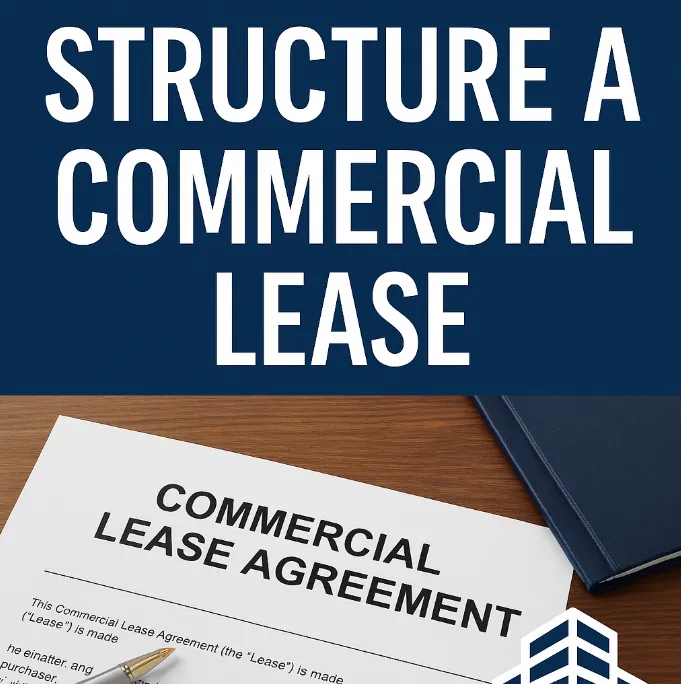
📑 How to Structure a Commercial Lease Like a Pro 🧠📈
📑 How to Structure a Commercial Lease Like a Pro 🧠📈
📝 Mastering the Commercial Lease Agreement 🏢💼
How to Structure a Commercial Lease Like a Pro
Whether you're a landlord, investor, or tenant, understanding how to structure a commercial lease is essential for long-term profitability and risk mitigation. A well-crafted lease sets the tone for your landlord-tenant relationship, outlines legal responsibilities, and protects your property income. Let’s break down the key components of a strong commercial lease agreement.
🧱 1. Define the Lease Type
Before you dive into the numbers, determine what type of lease structure is appropriate:
· Triple Net (NNN): Tenant pays base rent + property taxes, insurance, and maintenance.
· Gross Lease: Landlord covers all property-related expenses.
· Modified Gross Lease: A hybrid where costs are shared.
Each lease type has different implications for risk, cash flow, and tenant appeal.
📅 2. Set the Term and Renewal Options
A commercial lease typically ranges from 3 to 10 years. Make sure to:
· Clearly define the initial lease term
· Include renewal options (and how rent will adjust)
· Address early termination clauses, if any
💲 3. Detail the Rent Structure
Clearly outline:
· Base rent amount and payment schedule
· Escalation clauses (e.g., annual increases or CPI adjustments)
· Late fees and grace periods
Transparent rent terms reduce disputes and build confidence with tenants.
🛠️ 4. Clarify Maintenance and Repair Responsibilities
This is often where landlord-tenant friction begins. Your lease should specify:
· Who maintains HVAC, plumbing, electrical, roof, etc.
· Who handles landscaping, janitorial services, or parking lot upkeep
· Who pays for capital improvements
In NNN leases, tenants typically cover most expenses, but always double-check what is (and isn’t) passed through.
🔐 5. Include Use, Subletting, and Exclusivity Clauses
Protect your asset by:
· Stating what the space can be used for
· Limiting subletting without landlord approval
· Offering exclusive use clauses (especially for retail spaces)
⚖️ 6. Address Insurance, Indemnity, and Legal Provisions
Ensure both parties are protected with:
· Required insurance types (liability, casualty, business interruption)
· Indemnification language to shift liability
· Default remedies and legal jurisdiction
📌 Final Thoughts
A well-structured commercial lease doesn’t just secure rent—it creates a roadmap for a productive relationship and a stable investment. Whether you're leasing retail, office, or industrial space, taking the time to get the lease right can pay dividends for years.
Need help reviewing or drafting your commercial lease?
📞 Let’s talk — HoustonRealEstateBrokerage.com
https://www.houstonrealestatebrokerage.com/
https://www.houstonrealestatebrokerage.com/houston-cre-navigator
https://www.commercialexchange.com/agent/653bf5593e3a3e1dcec275a6
http://expressoffers.com/[email protected]
https://app.bullpenre.com/profile/1742476177701x437444415125976000
https://author.billrapponline.com/
https://www.amazon.com/dp/B0F32Z5BH2
© 2023-2024 Bill Rapp, Broker Associate, eXp Commercial Viking Enterprise Team
